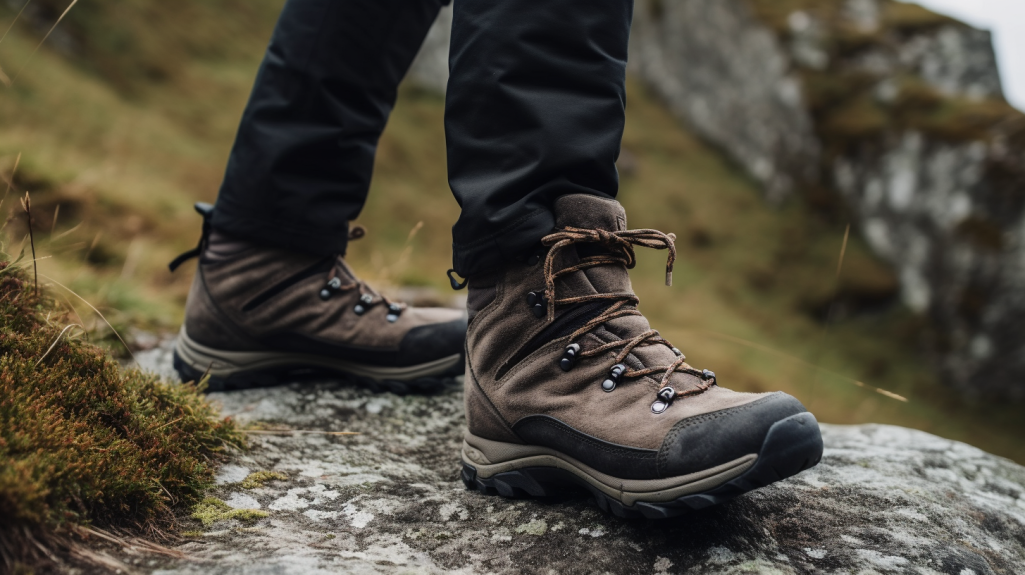Hiking is a delightful way to explore nature’s wonders, but the enjoyment of your trek significantly depends on the footwear you choose. Ill-fitting boots can transform a picturesque hike into a painful ordeal. To ensure your hiking experience is nothing short of extraordinary, it’s vital to find the perfect pair of hiking boots that fit like a glove. In this comprehensive guide, we’ll delve deeper into the nuances of selecting the ideal hiking boots and explore the various types tailored to specific terrains and preferences.
The Perfect Fit
Finding the right fit is the cornerstone of choosing hiking boots. A well-fitted boot provides support, prevents blisters, and ensures comfort throughout your hike. Here’s how to achieve that perfect fit:
- Toe Space: Your toes should have enough wiggle room, especially when wearing thick hiking socks. A thumb’s width of space between your longest toe and the front of the boot is a good rule of thumb.
- Heel Support: The boot should snugly cradle your heel without slipping. A secure fit prevents friction, reducing the risk of blisters.
- Arch Support: Look for boots with adequate arch support, especially if you have high or low arches. Proper arch support enhances stability and reduces fatigue on long hikes.
- Width: Hiking boots come in different widths. Make sure the boot isn’t too tight around the ball of your foot. If your feet are wider, opt for boots designed for a wider fit.
- Walk and Test: Walk around the store, preferably on an inclined surface if available. Pay attention to any pressure points or discomfort. A comfortable fit during the trial indicates a promising hiking experience.
Types of Hiking Boots:
a. Trail Shoes: Trail shoes are perfect for light hiking on well-groomed paths. They are lightweight and offer excellent flexibility, making them suitable for day hikes or casual walks. Trail shoes are ideal for beginners and those who prefer a lighter, more agile option.
b. Hiking Boots: Hiking boots are the middle ground between trail shoes and heavy-duty backpacking boots. They offer a balance of support, durability, and weight, making them versatile for various terrains. Hiking boots provide ankle support, making them suitable for moderate trails and uneven surfaces.
c. Backpacking Boots: Backpacking boots are designed for serious hikers tackling rugged terrains with a heavy backpack. These boots provide exceptional ankle support and protection against rough surfaces, making them ideal for challenging trails and extended backpacking trips. They are durable, water-resistant, and offer maximum stability, ensuring your feet stay comfortable even in the most demanding conditions.
Consider Your Terrain
The type of terrain you plan to conquer significantly influences your choice of hiking boots. Consider these factors when matching your boots to the terrain:
- Rocky Trails: For rocky terrains, opt for hiking or backpacking boots with sturdy soles and excellent ankle support. These features provide stability and protect your feet from sharp rocks.
- Muddy Paths: Look for boots with deep lugs and a waterproof membrane to keep your feet dry and provide traction in muddy conditions.
- Mountainous Terrain: Backpacking boots are ideal for mountainous trails due to their superior ankle support and durability. They offer protection against uneven surfaces and rocky terrain.
- Desert Hiking: Choose breathable boots with ample ventilation to prevent overheating in hot desert environments. Lightweight hiking boots or trail shoes with good tread can work well in sandy deserts.
Additional Features to Consider:
- Waterproofing: If you plan to hike in wet or rainy conditions, consider boots with a waterproof membrane (such as Gore-Tex) to keep your feet dry. Waterproof boots are essential for stream crossings and rainy weather.
- Insulation: If you hike in cold environments, insulated boots keep your feet warm. Thinsulate or similar materials provide insulation without adding excessive bulk to the boots.
- Breathability: Boots with breathable materials and ventilation ports prevent your feet from getting sweaty and uncomfortable, especially during warm weather hikes.
- Cushioning: Adequate cushioning in the midsole provides comfort and absorbs shock, reducing strain on your feet and joints during long hikes.
Proper Care and Maintenance
Once you’ve found the perfect pair of hiking boots, it’s crucial to take care of them to ensure their longevity and performance. Regularly clean your boots after hikes to remove dirt and debris. Properly dry them to prevent odor and mold. Use waterproofing treatments to maintain their water-resistant properties.
In conclusion, investing in high-quality hiking boots that fit well and match your hiking needs is essential for a comfortable and enjoyable outdoor experience. Consider your foot shape, terrain, and specific requirements to find the perfect pair. Remember, a well-fitted, supportive pair of hiking boots not only enhances your hiking performance but also keeps your feet happy, allowing you to focus on the breathtaking views and the joy of the journey. So, lace up your perfectly fitting boots and embark on your next adventure with confidence, knowing your feet are well taken care of. Happy hiking!

